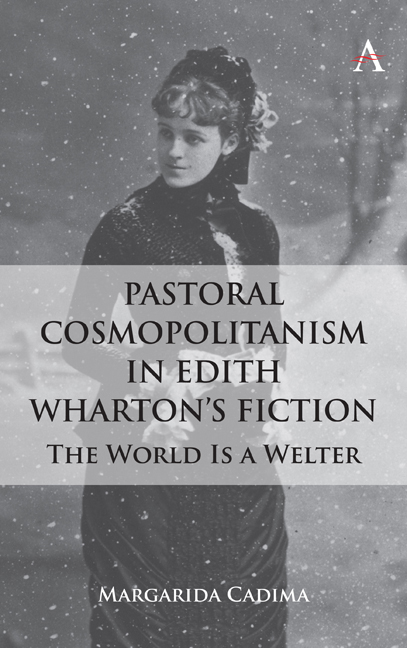Chapter 4 - Central Park as an “Ecological Threshold”?
Published online by Cambridge University Press: 28 February 2024
Summary
In A Backward Glance Wharton, weighing her own reactions to the stifling atmosphere of New York City, asks: “How could I understand that people who had seen Rome and Seville, Paris and London, could come back to live contentedly between Washington Square and the Central Park?” Central Park, the green lung of New York City was designed in 1858 by Frederick Law Olmsted and Clavert Vaux. “The two envisioned” the 800 acres of uninterrupted rurality “as a pastoral retreat from the pressures and aesthetic monotony of a growing city, and historians and landscape architects have seen it reflected in their eyes, as a work of landscape art.” Central Park reveals a juxtaposition and tension between nature and the urban, pointing to a “threshold motif” in pastoral cosmopolitanism. “I pause on its threshold”—as Wharton mused in A Backward Glance, regarding her father's library to which she was perpetually drawn. We too, as readers, are invited to pause on New York City's green verge to assess how it resonates in her fiction. Rather than a permanent, immovable divider or partition, the park acts as a lush permeable membrane within the urban sprawl of imposing townhouses. What social contacts take place through it and despite it?
This chapter addresses how Central Park, which covers about six percent of Manhattan, becomes a vital site of environmental enquiry for Wharton. Pointed references to, and reflections upon, this serene area of woods, sweeping meadows and ponds are sprinkled throughout her novels, published journalism, novellas and short stories alike. In The Age of Innocence, set in the 1870s, the matriarch Mrs. Manson Mingott builds a house “in an inaccessible wilderness near the Central Park.” There is impish wit in Wharton's lexis. This brand of “wilderness” pokes fun at that specific mode of American exceptionalism that separates a “New World” synonymous with cultural-nationalist vigor and pride from the “Old” and tired green spaces of Western Europe. The phrasing also acknowledges, and pays tribute to, the artificiality of Central Park, an audacious facsimile of untrammeled nature bounded by busy streets—an ingenious man-made enclave of pristine lakes that pretends to be a zone largely uncorrupted by man.
- Type
- Chapter
- Information
- Pastoral Cosmopolitanism in Edith Wharton's FictionThe World is a Welter, pp. 41 - 48Publisher: Anthem PressPrint publication year: 2023

